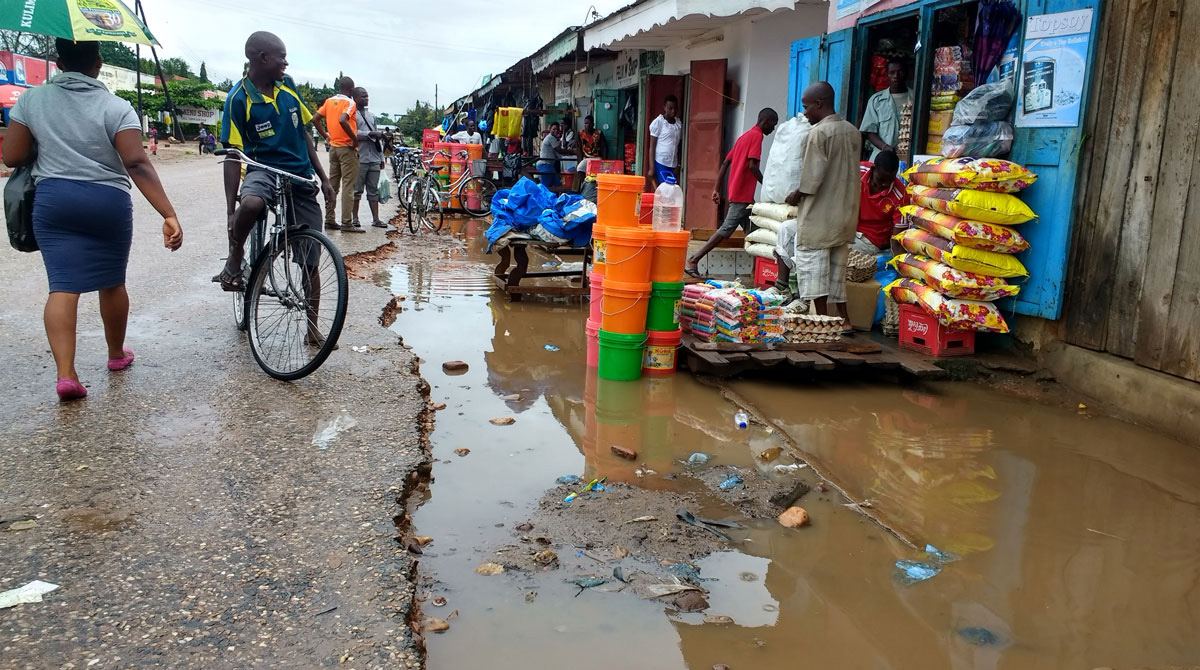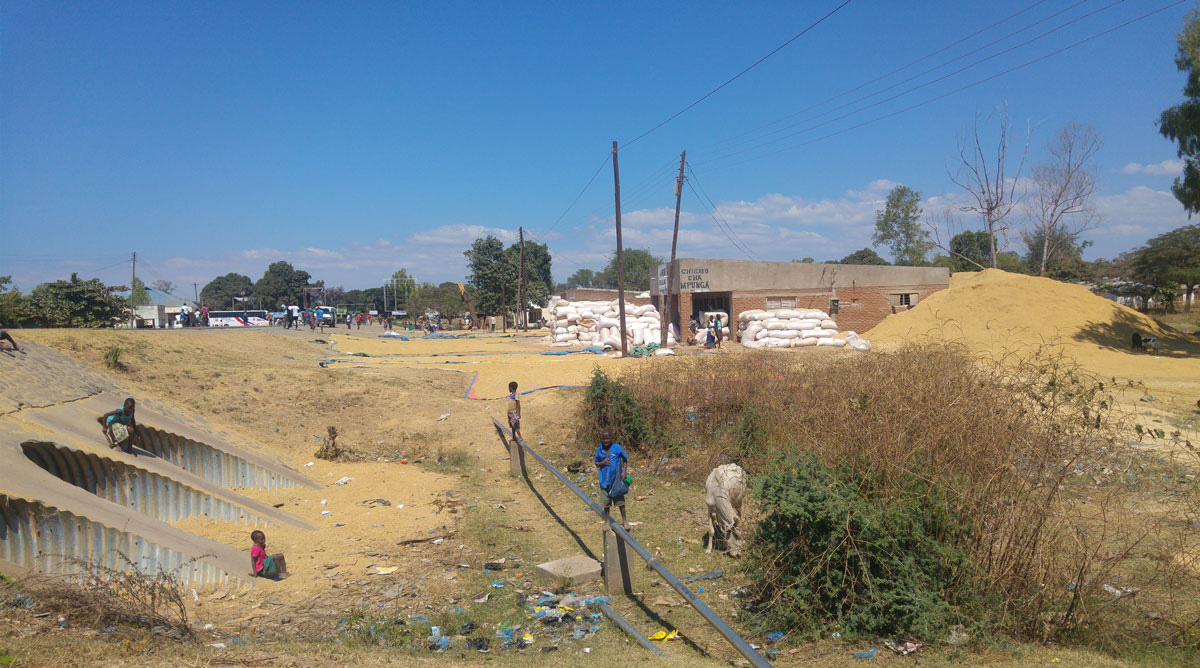The Urban Ark project is investigating how towns in Sub-Saharan Africa can tackle building risk outside of the formal planning system.

Business goes on despite market-stalls in Karonga often being inundated with flood-waters during the rainy season. Credit: Donald Brown
On the edge of a small town called Karonga, in northern Malawi, a primary school was built in 2016 near an informal settlement. For this growing community having a school was a big leap forward – a chance for their children to have an education without having to travel long-distances everyday. But the area is prone to flooding so the children are at risk just because of the location of the school.
It’s an education of a sort. And better, of course, than nothing. But with a bit more joined-up thinking and at no greater cost, could this building have provided a full-time education in a safer place?
This question is one of many that researchers at The Bartlett’s Development Planning Unit (DPU) have been working to answer as part of a wider project called Urban Ark (Urban Africa Risk Knowledge), funded by the Department for International Development, to find ways to make sure that cities in Sub-Saharan Africa develop in a way that reduces the risks to the population rather than adding to them.
“We are looking at four recent projects in Karonga,” says Cassidy Johnson, Associate Professor at the DPU. “A water treatment plant, the expansion of the market in the town centre, the consolidation of an informal settlement and this school. All were built in ways that increased the risks for the population.”
Understanding the local context

Flooding infrastructure was built in Karonga a number of years ago (front left). During the dry seasons it is used as an area for processing rice, livestock grazing and children’s play areas. In the background, pedestrians share the road with cars, trucks and buses. Malawi has one of the highest rates of traffic accidents in the world, partly because pedestrians and vehicles share the same spaces. Credit: Donald Brown
Through interviews with local officials and the community, Johnson and fellow DPU researchers Dr Emmanuel Osuteye and Dr Donald Brown, teamed up with researchers at Mzuzu University, Malawi, to understand the planning processes in Karonga. They found that the school was built amid the rice paddies of the North Rukuru river floodplain, and funded by district authorities without an environmental assessment, despite the fact the area has been officially designated for agriculture only.
The town itself doesn’t have its own government and although the authorities running the wider district have planning departments they yielded to the pressures of the local community. “The community chiefs are very powerful and they control when and where new buildings go up,” Johnson explains.
Despite this small town having more than a fair share of natural disaster risk – from flooding to earthquakes and droughts – and a whole array of widespread, more low-level, everyday risks from lack of clean water, malaria, drowning, traffic accidents, cooking fires and animal attacks, “risk comes fairly low on the agenda” when buildings go up. In the case of the school, economic concerns and the need to give new generations an education drove the decision.
Raising risk up the agenda
DPU researchers have worked to raise awareness and discussion of risks the community live with. One project, led by DPU Professor Adriana Allen, has created a way for the local community to gather data on the many risks they face and map them digitally.
At the same time, Johnson and colleagues have interviewed scores of people, manually coding the information given to understand the planning processes for different projects and identify ways to integrate the notion of risk into the way things are done.
Ironically, one of the main outcomes of this detailed work by planning experts is to establish and understand, scientifically, what happens when there is effectively no urban planning.
“The way cities develop is complex,” says Johnson. “We can’t just see the formal planning system as the way to tackle risk”.
 Close
Close




